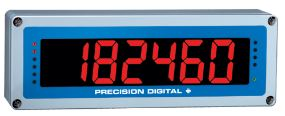Introduction:
Automotive photography is more than just pointing and shooting—it’s an art form that requires skill, creativity, and attention to detail. Whether you’re capturing the sleek lines of a sports car or the rugged beauty of a vintage vehicle, mastering automotive photography takes practice and dedication. In this article, we’ll explore expert tips and techniques to help you elevate your automotive photography game and capture stunning images that showcase the beauty and power of automobiles.
Understanding Your Subject:
Before you start snapping photos, take some time to study and understand the vehicle you’ll be photographing. Pay attention to its unique features, such as its body style, paint color, and design details. Consider the story you want to tell with your photos—are you aiming to highlight the car’s speed and performance, or its elegance and luxury? Understanding your subject will help you compose your shots effectively and capture images that resonate with viewers.
Choosing the Right Location:
The location of your photo shoot can make or break your automotive photos. Look for settings that complement the style and personality of the vehicle, whether it’s an urban cityscape, a scenic countryside, or an empty parking lot. Consider factors like lighting, background elements, and potential distractions when scouting locations, and choose spots that allow you to capture the car from multiple angles and perspectives.
Mastering Lighting Techniques:
Lighting is one of the most important aspects of automotive photography, as it can dramatically affect the look and feel of your images. When shooting outdoors, aim to capture your photos during the golden hour—just after sunrise or before sunset—when the light is soft and diffused. Avoid shooting in harsh midday sunlight, as it can create harsh shadows and washed-out colors. If shooting indoors or in low-light conditions, use artificial lighting sources like strobes or continuous lights to illuminate the car evenly and highlight its features.
Experimenting with Composition:
Composition plays a crucial role in automotive photography, helping to draw the viewer’s eye to the most important elements of the image. Experiment with different compositions, such as leading lines, symmetry, and the rule of thirds, to create visually compelling photos. Consider using props or incorporating interesting foreground elements to add depth and context to your shots. Don’t be afraid to get creative and try out new angles and perspectives to capture the car from its best side.
Focusing on Details:
In automotive photography, it’s often the small details that make a big impact. Take the time to zoom in on key features of the car, such as its grille, headlights, or wheels, and capture close-up shots that highlight these details. Pay attention to reflections, textures, and reflections, and use them to add visual interest and depth to your photos. Experiment with shallow depth of field to create a sense of depth and draw the viewer’s eye to specific areas of the image.
Choosing the Right Gear:
While you don’t need fancy equipment to take great automotive photos, having the right gear can certainly help. Invest in a quality DSLR or mirrorless camera with a variety of lenses to give you flexibility and creative control over your shots. Wide-angle lenses are great for capturing sweeping landscapes or interior shots, while telephoto lenses can help you zoom in on details from a distance. Consider investing in a tripod to keep your camera steady and reduce blur, especially when shooting in low-light conditions or using slow shutter speeds.
Editing and Post-Processing:
Post-processing is an important step in the automotive photography process, allowing you to fine-tune and enhance your images to achieve the desired look and feel. Use editing software like Adobe Lightroom or Photoshop to adjust exposure, contrast, color balance, and sharpness, and remove any distractions or imperfections from your photos. Experiment with different editing techniques to find the style that best suits your vision, whether it’s vibrant and colorful or moody and dramatic.
Practice Makes Perfect:
Like any skill, mastering automotive photography takes practice and patience. Don’t be discouraged if your first attempts don’t turn out as expected—keep experimenting, learning, and refining your techniques, and you’ll gradually improve over time. Study the work of other automotive photographers for inspiration, attend workshops or online courses to learn new techniques, and most importantly, get out there and start shooting. With dedication and perseverance, you’ll soon be capturing stunning automotive images that turn heads and inspire admiration. Read more about automotive photography tips





